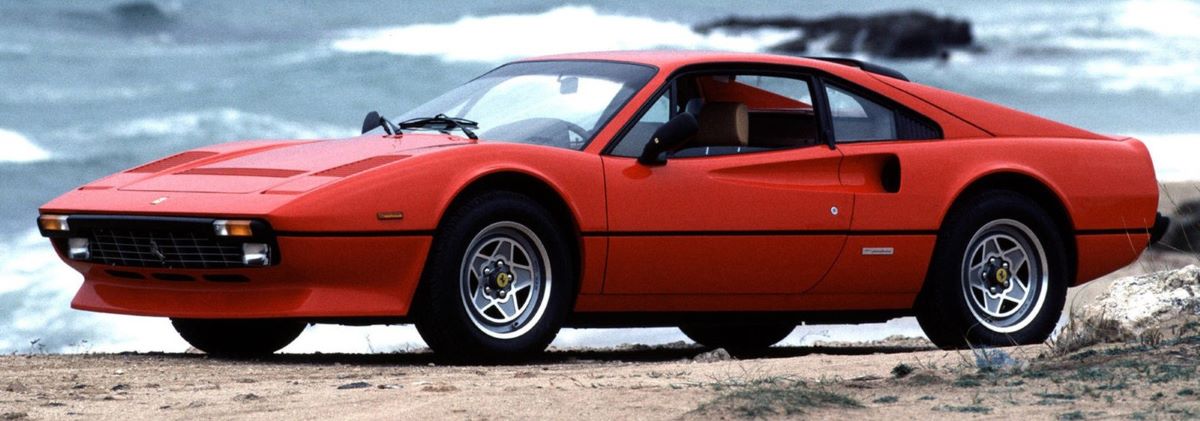
308 GTB Quattrovalvole
The transition from carburettor to fuel injection and the introduction of new anti-pollution laws all had a sizeable impact on the power of the 308 GTBi compared to its predecessor, the 308 GTB. Research to remedy this situation was quickly undertaken and soon showed that four valves per cylinder offered the optimal solution. This innovation saw the engine make up its lost horsepower and the car regain position as the reference point in its category.
The 308 GTB Quattrovalvole succeeded the 308 GTBi, and was presented at the 1982 Paris Salon. The Quattrovalvole part of the model name referred to the four valves per cylinder heads on the engine, which provided increased power over the preceding model. Visually the new model was very similar to the outgoing one, but could be recognised by the addition of a slim louvre panel in the front lid to aid radiator exhaust air exit, paired electrically operated door mirrors with a small enamel Ferrari badge on the shell, a revised radiator grille with rectangular driving lights at the extremities, and rectangular (instead of round) side repeater lights. The interior also received some minor alterations, and cloth seat centres became available as an option to the standard full leather, whilst the leather rim satin black three spoke steering wheel featured a triangulated section around the horn push. As with the preceding series’ of 308 models, USA market cars could be identified by heavier bumper assemblies, and rectangular side marker lights on the wings. Options available were metallic paint, a deep front spoiler, air conditioning, wider wheels, 16″ Speedline wheels with Pirelli P7 tyres, and a rear of roof satin black finished aerofoil (standard on Japanese market models).
The V8 engine was essentially of the same design as that used in the 308 GTBi model, apart from the four valves per cylinder heads. It was of a 90 degree configuration, with belt driven twin overhead camshafts per bank, having a total capacity of 2926cc, with a bore and stroke of 81mm x 71mm, with wet sump lubrication, bearing factory type reference F 105 AB 000 for European market cars. The claimed power output for main market European cars was 240bhp at 7000rpm, and 235bhp at 6800rpm for US market variants. The engine was transversely mounted in unit with the all synchromesh five speed transmission assembly, which was below, and to the rear of the engine’s sump. The gear and final drive ratios were altered to suit the revised characteristics of the four valves per cylinder engine. It was fitted with a Bosch K Jetronic fuel injection system, coupled to a Marelli MED 803A Digiplex electronic ignition system, incorporating a coil, distributor and ignition module to serve each bank of cylinders. All US market examples were fitted with catalytic convertors.
The main European market 308 GTB Quattrovalvole models had a tubular chassis with factory type reference F 105 GB 100, Disc brakes, with independent suspension via wishbones, coil springs, and hydraulic shock absorbers, were provided all round, with front and rear anti roll bars. All models were numbered in the Ferrari odd number road car chassis sequence of the time, with right and left hand drive available. The model was produced in a total of 748 examples between 1982 and 1985 in the chassis number range 42809 to 59071.
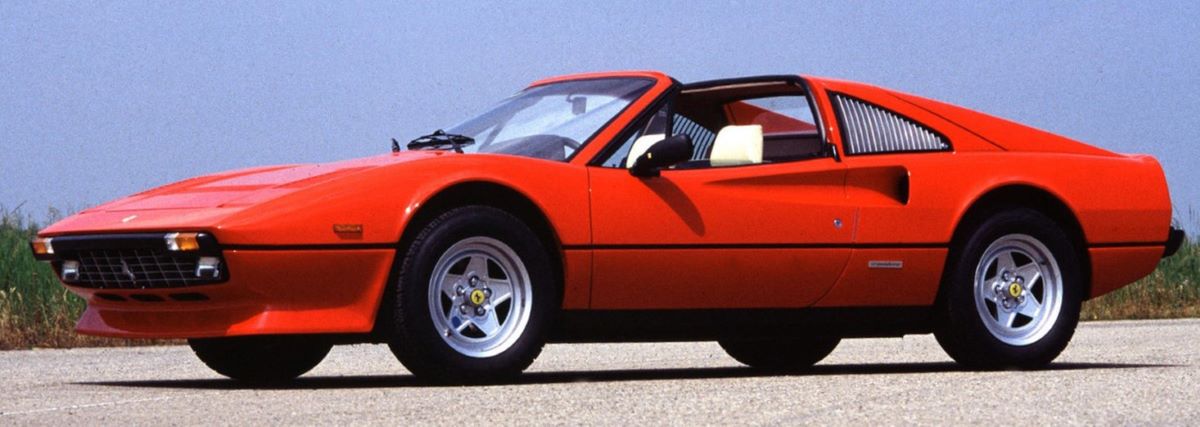
308 GTS Quattrovalvole
As with the preceding 308 GTB and 308 GTBi models there was a targa roof version available, which was called the 308 GTS quattrovalvole. This version is easily identifiable by the removable black roof section and the satin black triangular shaped louvres covering the glass in the sail panels. Both QV models can also be identified by a revised radiator grille and bumper, an air outlet louvre in the front lid and new door mirrors featuring a small enamel shield on the casing.
The 308 GTS Quattrovalvole, with a removable targa roof, succeeded the 308 GTSi, and was presented at the 1982 Paris Salon concurrently with the 308 GTB Quattrovalvole model. The Quattrovalvole part of the model name referred to the four valves per cylinder heads on the engine, which provided increased power over the preceding model. Visually the new model was very similar to the outgoing one, but could be recognised by the addition of a slim louvre panel in the front lid to aid radiator exhaust air exit, paired electrically operated door mirrors with a small enamel Ferrari badge on the shell, a revised radiator grille with rectangular driving lights at the extremities, and rectangular (instead of round) side repeater lights. The interior also received some minor alterations, and cloth seat centres became available as an option to the standard full leather, whilst the leather rim satin black three spoke steering wheel featured a triangulated section around the horn push. The removable grained satin black finished roof panel was stowed in a vinyl cover behind the seats when not in use. As with the preceding series’ of 308 models, USA market cars could be identified by heavier bumper assemblies, and rectangular side marker lights on the wings. Options available were metallic paint, a deep front spoiler, air conditioning, wider wheels, 16″ Speedline wheels with Pirelli P7 tyres, and a rear of roof satin black finished aerofoil (standard on Japanese market models).
The V8 engine was essentially of the same design as that used in the 308 GTSi model, apart from the four valves per cylinder heads. It was of a 90 degree configuration, with belt driven twin overhead camshafts per bank, having a total capacity of 2926cc, with a bore and stroke of 81mm x 71mm, with wet sump lubrication, bearing factory type reference F 105 AB 000 for European market cars. The claimed power output for main market European cars was 240bhp at 7000rpm, and 235bhp at 6800rpm for US market variants. The engine was transversely mounted in unit with the all synchromesh five speed transmission assembly, which was below, and to the rear of the engine’s sump. The gear and final drive ratios were altered to suit the revised characteristics of the four valves per cylinder engine. It was fitted with a Bosch K Jetronic fuel injection system, coupled to a Marelli MED 803A Digiplex electronic ignition system, incorporating a coil, distributor and ignition module to serve each bank of cylinders. All US market examples were fitted with catalytic convertors.
The main European market 308 GTS Quattrovalvole models had a tubular chassis with factory type reference F 105 GS 100, Disc brakes, with independent suspension via wishbones, coil springs, and hydraulic shock absorbers, were provided all round, with front and rear anti roll bars. All models were numbered in the Ferrari odd number road car chassis sequence of the time, with right and left hand drive available. The model was produced in a total of 3042 examples, over four times as many as the concurrent fixed roof berlinetta, between 1982 and 1985 in the chassis number range 41701 to 59265.
Specifications and Features
Engine
- Type…………………………….rear, transverse, 90° V8
- Bore/stroke…………………..81 x 71 mm
- Unitary displacement…….365.86 cc
- Total displacement……….2926.90 cc
- Compression ratio…………9.2 : 1
- Maximum power………….176 kW (240 hp) at 7000 rpm
- Power per litre……………..82 hp/l
- Maximum torque………….260 Nm (26.5 kgm) at 5000 rpm
- Valve actuation……………..twin overhead camshafts per bank, four valves per cylinder
- Fuel feed………………………Bosch K-Jetronic injection
- Ignition………………………..electronic, single spark plug per cylinder
- Lubrication…………………..wet sump
- Clutch………………………….single-plate
Chassis
Frame………………………………tubular steel
Front/Rear suspension……..independent, unequal-length wishbones, coil springs over telescopic shock absorbers, anti-roll bar
Brakes……………………………..discs
Transmission…………………..5-speed + reverse
Steering…………………………..rack-and-pinion
Fuel tank…………………………capacity 74 litres
Front tyres………………………205/55 VR 16
Rear tyres……………………….225/50 VR 16
Bodywork
- Type…………………………….two-seater berlinetta or two-seater targa-top
- Length…………………………4230 mm
- Width………………………….1720 mm
- Height…………………………1120 mm
- Wheelbase……………………2340 mm
- Front track…………………..1460 mm
- Rear track…………………….1460 mm
- Weight…………………………1275 kg (dry) berlinetta / 1286 kg (dry) targa-top
Performance
- Top speed…………………….255 km/h
- Acceleration
0-400 m……………………….14.5 sec
0-1000 m………………………26.2 sec
Gallery


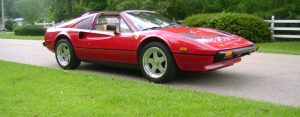
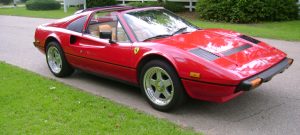
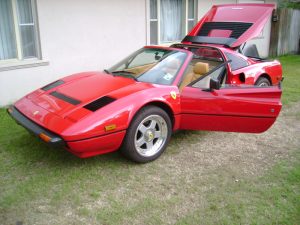
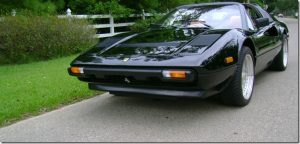
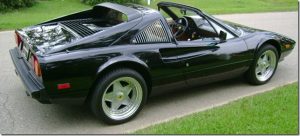
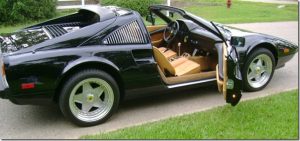
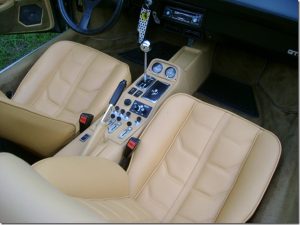
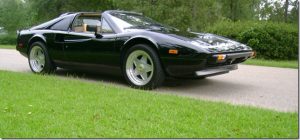
You must be logged in to post a comment.